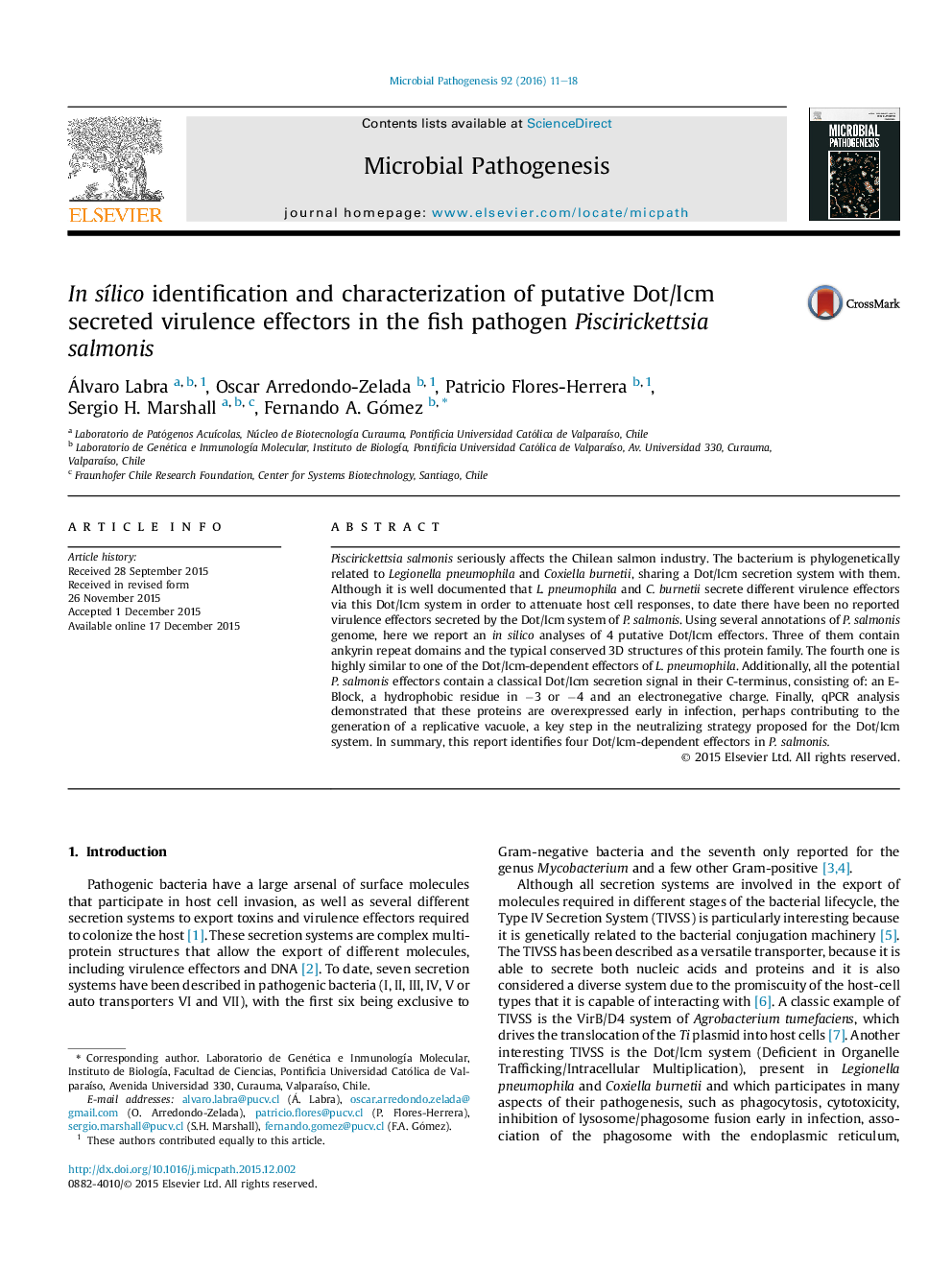| Article ID | Journal | Published Year | Pages | File Type |
|---|---|---|---|---|
| 6136131 | Microbial Pathogenesis | 2016 | 8 Pages |
â¢Where detected 4 putative Dot/Icm substrates in Piscirickettsia salmonis genome.â¢3 proteins contain eukaryotic conserved domains (Ankyrins).â¢The proteins share features with Legionella and Coxiella Dot/Icm substrates.â¢The 4 proteins have the classical Dot/Icm secretion signal in the C-terminal.â¢The proteins are over-expressed in infection kinetics in vitro, suggesting that could be implicated in P. salmonis intracellular survival and multiplication.
Piscirickettsia salmonis seriously affects the Chilean salmon industry. The bacterium is phylogenetically related to Legionella pneumophila and Coxiella burnetii, sharing a Dot/Icm secretion system with them. Although it is well documented that L. pneumophila and C. burnetii secrete different virulence effectors via this Dot/Icm system in order to attenuate host cell responses, to date there have been no reported virulence effectors secreted by the Dot/Icm system of P. salmonis. Using several annotations of P. salmonis genome, here we report an in silico analyses of 4 putative Dot/Icm effectors. Three of them contain ankyrin repeat domains and the typical conserved 3D structures of this protein family. The fourth one is highly similar to one of the Dot/Icm-dependent effectors of L. pneumophila. Additionally, all the potential P. salmonis effectors contain a classical Dot/Icm secretion signal in their C-terminus, consisting of: an E-Block, a hydrophobic residue in â3 or â4 and an electronegative charge. Finally, qPCR analysis demonstrated that these proteins are overexpressed early in infection, perhaps contributing to the generation of a replicative vacuole, a key step in the neutralizing strategy proposed for the Dot/Icm system. In summary, this report identifies four Dot/Icm-dependent effectors in P. salmonis.
Graphical abstractDownload high-res image (362KB)Download full-size imageIn this work was possible detect four putative Dot/Icm substrates in the genome of the fish pathogen Piscirickettsia salmonis. These proteins have similitudes with Legionella pneumophila and Coxiella burnetii Dot/Icm substrates such as: i) eukaryotic conserved domains and ii) a typical Dot/Icm secretion signal in the C-terminal. Finally, the P. salmonis putative Dot/Icm substrates are overexpressed during infection process in vitro, with similar patters to those reported for the Dot/Icm secretion apparatus.
